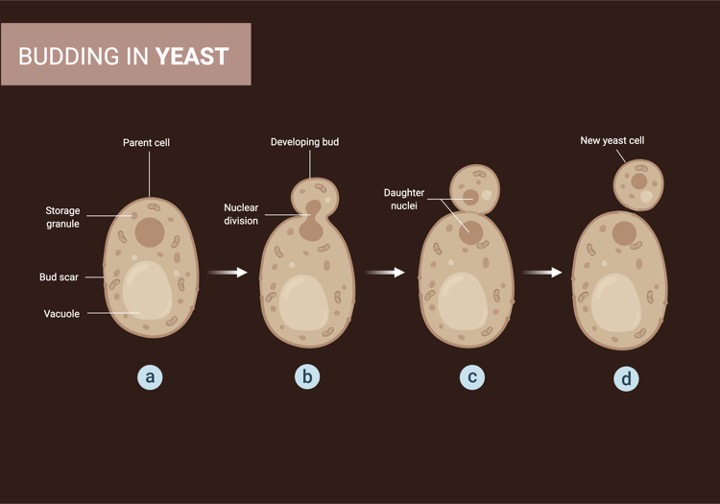Table of Contents
Budding Definition
Budding refers to the beginning of development in a broad sense. The process of bud production is evident in both unicellular (e.g. budding bacteria and yeast cells) and multicellular organisms, according to research (e.g. plants and sponges). Developing; bud grafting are synonyms.
What is Budding?
Budding is the creation of an extension (bud) of an organism in biology. The bud has the ability to grow into a new person. Gemmation is another term for this process. Gemmation is a process that fulfils the definition of a blossoming plant. A bud grows from the body of the “parent” to generate a new person.

Budding is an asexual mode of reproduction because no gametes are involved, and the “offspring” is a clone of the parent. Somatic cells are implicated instead of sex cells. They divide by mitosis and produce new sets of cells with the same genetic makeup. In many prokaryotes and eukaryotes, asexual budding is one of the ways of reproduction.
Budding is used for purposes other than reproduction in several disciplines of biology. Budding is a term used in embryology to describe structures that emerge as outgrowths from pre-existing elements during embryo differentiation.
A Bud is a protrusion generated by certain viruses as they leave the cell and utilise a segment of the host cell membrane. The virus’s exterior membrane is made up of a portion of the host’s cell membrane. The virus can then exit the cell without causing the host cell to lyse. As a result, the surviving viruses might continue to spread within the host cell.
Budding in Microbiology
Cell budding is a sort of asexual reproduction that occurs in some single-celled organisms, according to microbiology. Bacteria that multiply by budding, for example, are known as budding bacteria. Caulobacter, Hyphomicrobium, and Stella spp. are examples. In their aquatic habitats, most of them have stalks that they employ to connect to a substrate. Prostheca, the hyphal filament where a bud forms at the tip, is produced by Hyphomicrobium.
What Happens During Budding?
Budding is distinct from binary fission, another asexual bacterial reproduction method. The cell divides into two daughter cells with equal unilateral expansion in binary fission. The parent essentially separates into two identical cells. A new cell emerges from an old cell via budding. The new cell is often smaller than the old one.
Single-celled eukaryotes follow the same principle. A tiny daughter cell grows on the bigger mother cell in fungi, such as the yeast Saccharomyces cerevisiae. The bud forms and remains for a short time before detaching and developing entirely as a new individual.
Budding Examples
Certain invertebrates, such as Hydra (sponge), corals, echinoderm larvae, and some acoel flatworms, can exhibit budding. The first sign of hydra budging is a bud sprouting on the side of the “mother.” The Hydra bud separates to form a new individual Hydra.
Budding is a type of vegetative reproduction in plants. It is a natural occurrence. Horticulture, on the other hand, can artificially induce it. Grafting is a propagation technique in which the bud of one plant is put into the bud of another plant so that both plants can continue to grow together.
In most circumstances, a plant’s bud is inserted into the bark of another plant’s stem. Roses are one of the most regularly bud grafted plants.
Budding Citations
- Cellular quiescence in budding yeast. Yeast . 2021 Jan;38(1):12-29.
- Tempo and Mode of Genome Evolution in the Budding Yeast Subphylum. Cell . 2018 Nov 29;175(6):1533-1545.e20.
- Potential clinical scenarios of tumour budding in colorectal cancer. Acta Gastroenterol Belg . Oct-Dec 2019;82(4):515-518.
- Figures are created with BioRender.com







